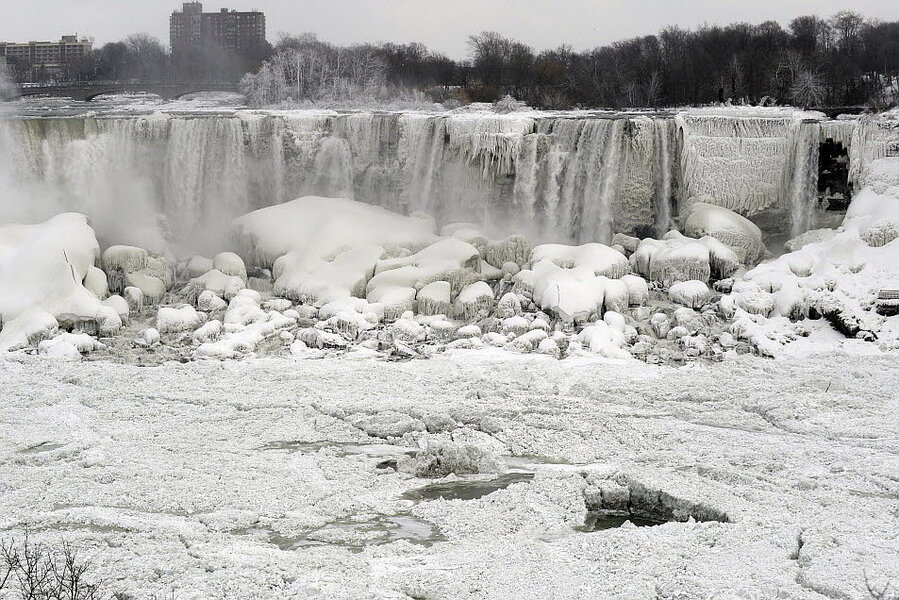Polar vortex price tag: Deep freeze may have cost economy about $5 billion
Loading...
| MINNEAPOLIS
Hunkering down at home rather than going to work, canceling thousands of flights, and repairing burst pipes from the Midwest to the Southeast has its price. By one estimate, about $5 billion.
The country may be warming up from the polar vortex, but the bone-chilling cold, snow and ice that gripped much of the country — affecting about 200 million people — brought about the biggest economic disruption delivered by the weather since Superstorm Sandy in 2012, said Evan Gold, senior vice president at Planalytics, a business weather intelligence company in suburban Philadelphia.
While the impact came nowhere close to Sandy, which caused an estimated $65 billion in property damage alone, the deep freeze's impact came from its breadth.
"There's a lot of economic activity that didn't happen," Gold said. "Some of that will be made up but some of it just gets lost."
Still, Gold noted his $5 billion estimate pales in comparison with an annual gross domestic product of about $15 trillion — working out to maybe one-seventh to one-eighth of one day's production for the entire country.
"It's a small fraction of a percent, but it's still an impact," Gold said.
Major US airlines, which canceled about 20,000 flights starting last Thursday, lost anywhere from $50 million to $100 million, said Helane Becker, an analyst with Cowen and Co. in New York.
JetBlue was hit especially hard because 80 percent of its flights go through New York or Boston, where the carrier shut down Monday evening into Tuesday. The airline also was affected by other airport closures and new regulations limiting pilot hours.
School closures took their own toll, keeping home parents who couldn't find alternatives for their kids. Even if those parents worked from home, they might not have been as productive, said Tony Madden, regional economist with the Federal Reserve Bank of Minneapolis.
"People in the northern climates are used to dealing with issues of snow and cold," Madden said. "However, when you get a one-in-20-year event like this, that disrupts activities."
The insurance industry has yet to estimate costs, but Robert Hartwig, president of the Insurance Information Institute in New York, said insurers plan for about $1.4 billion in winter storm catastrophe losses in any given year.
"We certainly know there is an epidemic of frozen and burst pipes this week," Hartwig said.
Damage to a Minnesota state health laboratory in St. Paul could top $1 million after the heating system failed and pipes leaked. Alabama Gov. Robert Bentley's home in Tuscaloosa took an estimated $50,000 blow from a burst water pipe. Roto-Rooter in Minneapolis and elsewhere has been "inundated" with calls about burst pipes and even frozen sewer lines since the cold snap, plumbing manager Paul Teale said.
Governments are meanwhile tallying costs for depleted road salt reserves, blown overtime budgets and repairs.
Other impacts will be felt in about 30 days when high heating bills start coming due, Gold said, which will affect how much consumers can spend in February.
But somebody always benefits, he said.
On-demand cable TV and restaurant delivery services gained, as did home centers and convenience stores where people went to stock up. Online retailers benefited from customers with an estimated $30 billion worth of new holiday gift cards burning holes in their pockets, he said.
Other beneficiaries may be farther away. Boston-based Hopper Research says the frigid temperatures caused a 52 percent spike in searches for flights to Cancun, Mexico, from people in Minneapolis and Chicago.
Associated Press writers Josh Freed in Minneapolis and Jayson Keyser in Chicago contributed to this report.







